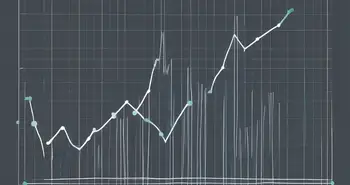How to Decide Position Sizing

Position sizing is a crucial component of successful trading, playing a pivotal role in risk management and overall investment strategy. This guide will walk you through the fundamentals of position sizing, factors to consider, different sizing methods, calculation techniques, common mistakes, and answers to frequently asked questions.
Understanding the Basics of Position Sizing
Definition of Position Sizing
Position sizing is the method used to determine the amount of capital to allocate to each trade. In simple terms, it’s about deciding how much of your total trading capital you will commit to a specific trade or investment. Properly managing your position sizes can significantly impact the sustainability of your trading, especially through the ups and downs of the market.
Moreover, position sizing is not merely a mechanical calculation; it also involves understanding your risk tolerance and market conditions. Traders often use various formulas to calculate optimal position sizes, such as the Kelly Criterion or the fixed fractional method. These approaches take into account factors like account size, risk percentage, and the stop-loss distance, allowing traders to tailor their strategies to their unique circumstances and market dynamics.
Importance of Position Sizing in Trading
The importance of position sizing cannot be overstated. By effectively managing how much you invest in each trade, you can control potential losses and protect your capital. For instance, if you have a trading account of $10,000 and determine that risking 2% per trade is appropriate, you would only risk $200 on any given trade. This strategy helps preserve your capital for future trades, enhancing your long-term success rate and overall performance.
Additionally, position sizing plays a crucial role in emotional management during trading. When traders risk a small, predetermined amount of their capital, they are less likely to experience anxiety or fear during market fluctuations. This psychological buffer allows them to stick to their trading plan and make more rational decisions rather than being swayed by emotions. Consequently, a well-thought-out position sizing strategy can lead to more disciplined trading habits and improved outcomes over time, fostering a more resilient trading mindset.
Factors Influencing Position Sizing
Market Volatility
Market volatility refers to the degree of variation in trading prices over a given period. High volatility means prices can swing widely in a short time, which increases risk. When the market is highly volatile, you may want to reduce your position sizes, as a greater price range can lead to larger losses. For instance, if a stock typically fluctuates by 1% daily, but news causes it to oscillate by 3%, you might reconsider how much you are willing to risk on that stock. Additionally, understanding the underlying causes of volatility can help traders make more informed decisions. Events such as economic reports, earnings announcements, or geopolitical tensions can trigger sudden price movements. By staying updated on these factors, traders can better anticipate potential market shifts and adjust their position sizes accordingly.
Risk Tolerance
Your risk tolerance is your ability and willingness to endure losses in trading. Different traders have different comfort levels; some may thrive on high risk and the potential for big gains, while others prefer a more conservative approach. Understanding your personal risk tolerance is essential in determining position sizes. If you are risk-averse, you might limit your position sizes to keep losses manageable, while a more aggressive trader may feel comfortable allocating larger portions of their capital. Moreover, risk tolerance can evolve over time due to changes in personal circumstances, market conditions, or even psychological factors. Regularly reassessing your risk tolerance can ensure that your trading strategy aligns with your current financial situation and emotional comfort level.
Investment Goals
Your investment goals also influence your position sizing strategy. Are you looking for aggressive growth or steady income? For instance, if you are young and investing for long-term growth, you may take larger risks with bigger position sizes, accepting losses for the chance of higher returns. Conversely, if you are nearing retirement, a more conservative approach with smaller positions may be wiser to protect your accumulated wealth. Additionally, the time horizon for your investments plays a crucial role in determining your approach to position sizing. Short-term traders may need to adopt more dynamic position sizing strategies to capitalize on fleeting opportunities, while long-term investors might focus on a more stable approach, allowing their investments to ride out market fluctuations over time. Understanding the interplay between your goals and the time frame for achieving them can significantly enhance your overall trading strategy.
Different Methods of Position Sizing
Fixed Fractional Position Sizing
Fixed fractional position sizing is one of the most common techniques used by traders. This strategy involves risking a fixed percentage of your total trading account on each trade. For example, if you have a $10,000 account and decide to risk 1% per trade, you would risk $100 regardless of the specific trade. This method provides a consistent approach and can help manage risk effectively.
Percent Risk Position Sizing
Similar to fixed fractional, percent risk position sizing involves determining your risk based on the percentage of your account and applying it to the distance between your entry point and stop-loss level. If you buy a stock at $50 and set a stop-loss at $48, your risk per share is $2. If your total risk allowance is $200, you could purchase 100 shares (since $200 divided by $2 equals 100 shares). This method allows for adjustments based on changing account balances.
Volatility-Based Position Sizing
Volatility-based position sizing takes into consideration the fluctuating nature of an asset. This strategy adjusts your position size according to the volatility, which means when an asset is more volatile, you reduce your position size to manage risk, and when it is stable, you can increase your position size. If a stock typically moves $1 on average, it might warrant a larger position compared to a stock that moves $5 on average daily.
How to Calculate Position Size
Step-by-Step Calculation Process
Calculating your position size can seem daunting at first, but it can be simple if broken down. Here’s a straightforward method:
- Determine your trading account balance.
- Set a risk percentage (e.g., 1% or 2%).
- Calculate your dollar risk per trade (Account Balance × Risk Percentage).
- Identify your entry and stop-loss points to find your risk per share.
- Divide your dollar risk by your risk per share to find your position size.
For example, if you have a $10,000 account and decide to risk 2%, your dollar risk is $200. If your entry is at $50 and your stop-loss is at $48, the risk per share is $2. Thus, $200 divided by $2 gives you a position size of 100 shares.
Tools and Software for Position Sizing
There are numerous tools and software designed to help with position sizing. Many trading platforms offer built-in calculators for position sizing, allowing you to input your account size, risk tolerance, and entry/stop-loss points to automatically provide the correct position size. Additionally, spreadsheets can be customized to perform these calculations and track your trades effectively.
Common Mistakes in Position Sizing
Overtrading
One of the most prevalent mistakes traders make is overtrading. This occurs when traders take on too many positions or invest too heavily in a single trade without sufficient analysis. Overtrading can lead to emotional decision-making, which often results in significant losses. Maintaining discipline and sticking with your position sizing rules is crucial to avoid this pitfall.
Ignoring Correlation
Another common mistake is ignoring the correlation between different positions. If you invest in multiple assets that are highly correlated—such as a tech stock and an index that includes that stock—you increase your risk without realizing it. Proper position sizing should factor in these correlations to ensure that your overall risk exposure is balanced.
Frequently Asked Questions
What is position sizing?
Position sizing refers to determining how much capital to allocate to a specific trade based on your account size and risk tolerance.
Why is position sizing important?
Effective position sizing helps to manage risk, protect capital, and improve the sustainability of your trading strategy.
How can I calculate my position size?
To calculate your position size, determine your trading account balance, risk percentage, stop-loss distance, and use a formula to find the appropriate size for each trade.
What are the common mistakes in position sizing?
Common mistakes include overtrading and ignoring asset correlation, both of which can heighten risk and lead to larger losses.
In conclusion, mastering position sizing is vital for every trader looking to achieve consistent results in the markets. By considering the factors outlined in this guide and implementing calculated methods, you can enhance your trading portfolio and move towards your financial goals with confidence.
Now that you're equipped with the knowledge to effectively manage your position sizing, take your trading to the next level with Morpher. Experience the future of investing on a platform that offers zero fees, infinite liquidity, and the ability to trade a vast array of assets, from stocks to sneakers. With Morpher, you can start with as little as $1, enjoy up to 10x leverage, and trade with confidence knowing your funds are secure in your self-hosted wallet. Ready to transform your trading experience? Sign Up and Get Your Free Sign Up Bonus today, and join the trading revolution with Morpher.

Disclaimer: All investments involve risk, and the past performance of a security, industry, sector, market, financial product, trading strategy, or individual’s trading does not guarantee future results or returns. Investors are fully responsible for any investment decisions they make. Such decisions should be based solely on an evaluation of their financial circumstances, investment objectives, risk tolerance, and liquidity needs. This post does not constitute investment advice.

Painless trading for everyone
Hundreds of markets all in one place - Apple, Bitcoin, Gold, Watches, NFTs, Sneakers and so much more.

Painless trading for everyone
Hundreds of markets all in one place - Apple, Bitcoin, Gold, Watches, NFTs, Sneakers and so much more.









